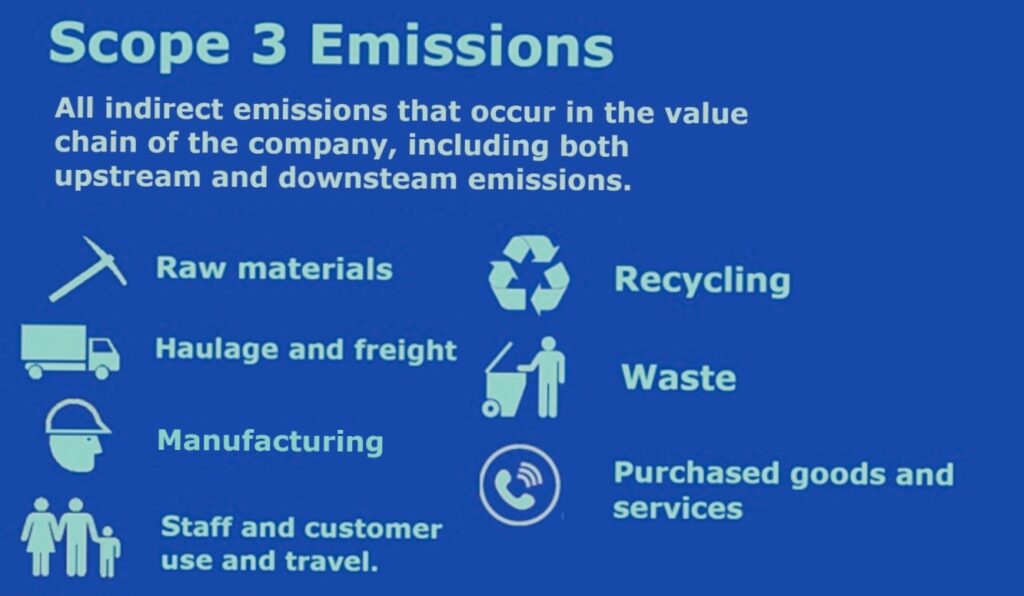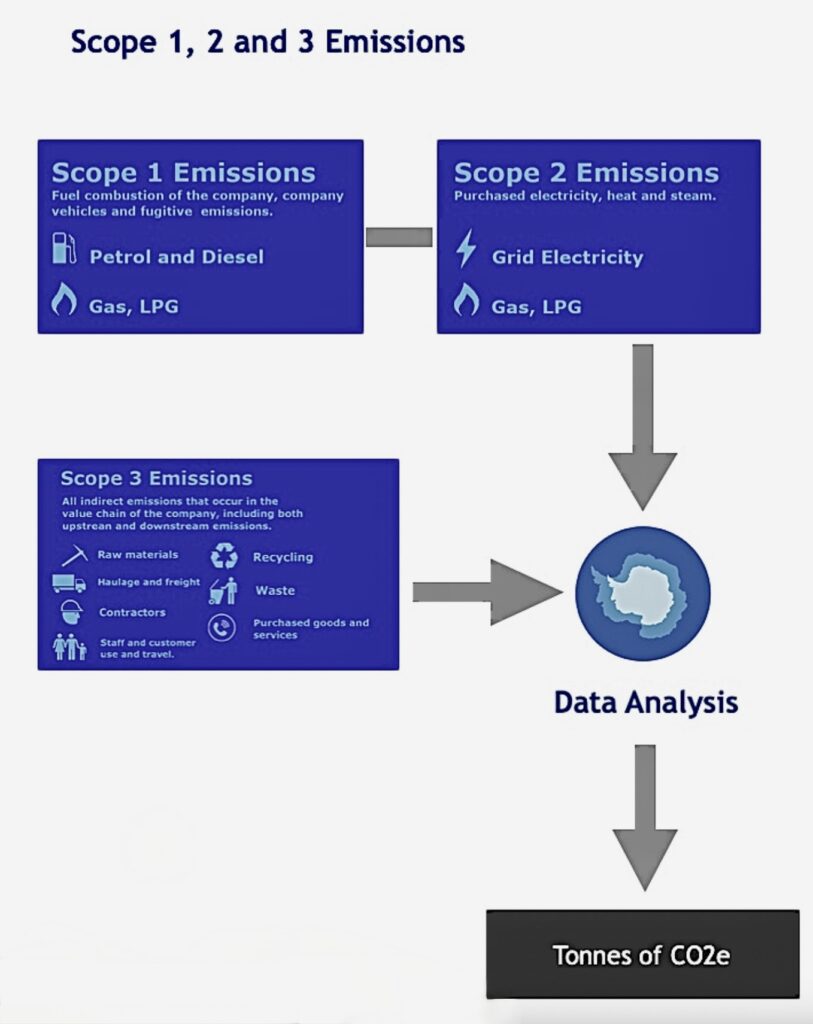
The Process
Performing a carbon (CO2e) audit involves assessing and quantifying the greenhouse gas emissions of an organisation’s activities. The audit typically includes three scopes of emissions; Scope 1, Scope 2, and Scope 3.
Here are the considerations and steps to take;
Define Scope Boundaries
+ Determine the organisational boundaries for the audit. This entails examining your upstream and down stream emissions within Scope 3 and finding reasonable boundaries upon which the business no longer burdens the responsibility of the emissions.
+ Decide whether to include Scope 3 in the audit. The GHG (Green House Gas) Protocol states that if Scope 3 emissions are meaningful and measurable in comparison to Scope 1 & 2 then they should be counted.
Calculate Scope 1 Emissions
Identify and quantify direct emissions from owned or controlled sources, such as:
+ Fuel combustion in stationary equipment and vehicles.
+ Process emissions from industrial activities
+ Fugitive emissions (ex;Leaks from equipment

Calculate Scope 2 Emissions
Determine the amount of purchased electricity and gas in kWh’s from the grid.
Calculate Scope 3 emissions
Identify all the emissions within the boundaries of your operation, both upstream and downstream. These will include embodied emissions from raw materials, haulage and freight logistics, waste and recycling, third party contractors, employees, and many others depending on the type of operation.

Climate strategy
Once a business or company has made to decision to audit their emissions we would arrange an initial meeting and possible site visit to discuss the boundaries of the audit, run through the various scopes of data requirements, and advise on improvements that can be made with a roadmap going forward.



